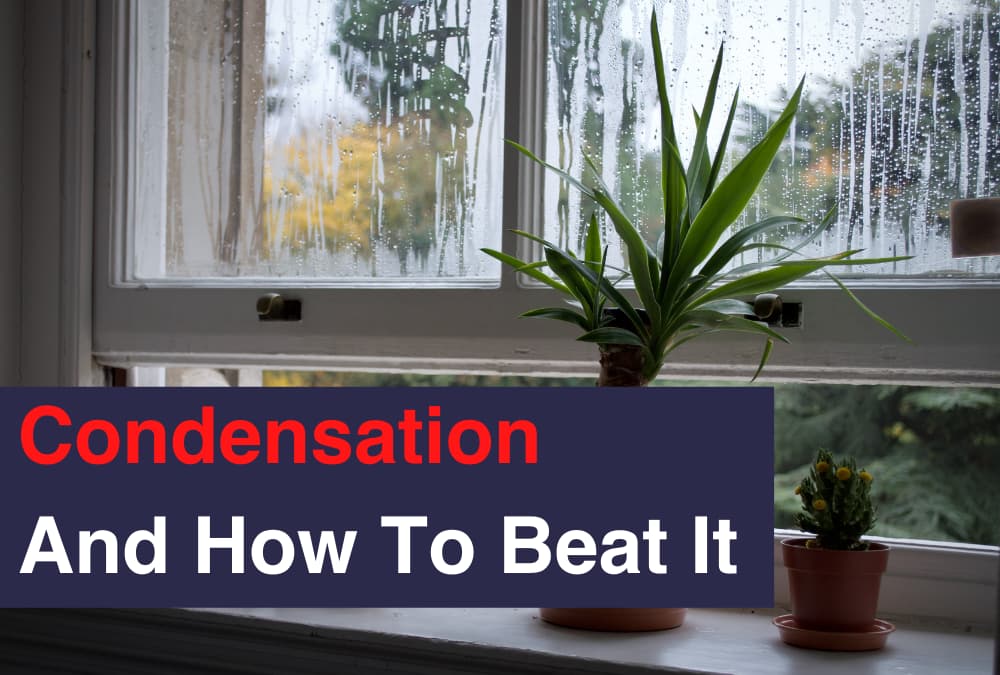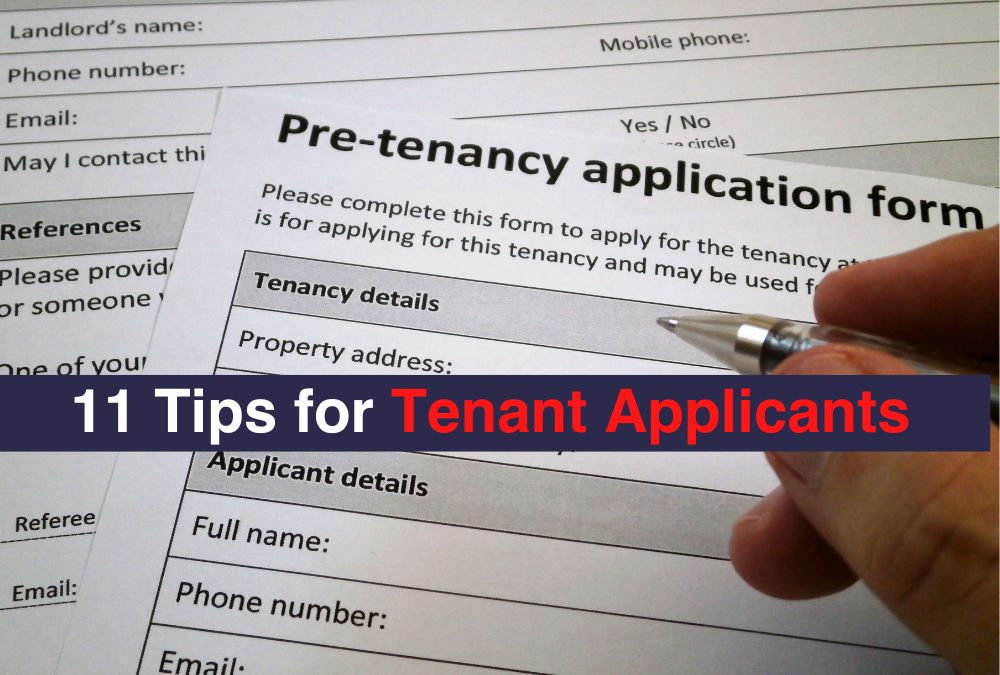‘Condensation dampness’ is a condition that affects millions of homes in the UK. Whether you are a Landlord or a Tenant this guide should help you control and prevent condensation and mould within your property.
What is Condensation?
Condensation occurs when warm air collides with cold surfaces or there is too much humidity in a property that can’t escape.
If this happens regularly, mould may start to grow – usually on cold outside walls and surfaces and in places where the air does not circulate well. Look out for the following signs that may indicate excessive dampness in your property:
- Streaming windows and walls
- Damp areas appearing on walls, especially behind furniture and in corners
- Wallpaper is starting to peel
- Window frames start to blacken
- Mould growth, usually black mould, has appeared
- Soft furnishings and fabrics become prone to mould and mildew
Where Does Condensation Dampness Occur?
The most vulnerable areas will either be rooms where a large amount of moisture is produced, i.e., bathroom and kitchen, or on cold surfaces in other rooms where this moisture can travel to.
The following areas are particularly prone to condensation:
- Cold surfaces such as mirrors, single glazed windows (above) and metal window frames.
- Kitchens and bathrooms.
- Walls of unheated rooms.
- Cold corners of rooms.
- Wardrobes/cupboards and behind furniture against an outside wall.
The effects of this process may be visible, for example droplets of water on gloss painted windowsills, but often the water droplets will soak into the wall and a problem will not be diagnosed until black mould patches start to appear.
Consider this: when an adult is asleep for approximately 8 hours, they exhale approximately two litres of liquid. If your windows are closed and there is no other ventilation, there will be condensation present.
| ???????????????? | = | ???? | = | ???? |
| 4 PEOPLE IN THE AVERAGE PROPERTY | CREATES 16 PINTS OF MOISTURE PER DAY | THAT AMOUNTS TO 112 PINTS OF MOISTURE PER WEEK |
What Causes Condensation?
Condensation usually occurs in winter because the building is cold, and windows are opened less so moist air cannot escape. It is most often caused by one of the following:
- There is insufficient ventilation in the property
- The heating system isn’t working properly
- The occupant is simply not opening windows or using extractors in kitchens and bathrooms.
- The occupant is leaving washing to dry in certain rooms and not opening windows to let the extra moisture out.
Tackling Condensation Problems
There are basically 3 main ways to address condensation. Please follow these tips to prevent it becoming a serious issue in your home:
- Stop Moisture Building Up
- Wipe down surfaces where moisture settles.
- Cover boiling pans when cooking.
- When cooking, bathing, or washing and drying clothes, close kitchen and bathroom doors to prevent steam going into colder rooms, even after you have finished.
- Cover fish tanks to stop the water evaporating into the air.
- Dry clothes outside where possible.
- Do not hang washing over radiators.
- Ventilate, or Air, the Home
- When cooking or washing, open windows or use extractors.
- Where drying clothes inside is necessary, do so in a small room with windows open.
- Open windows for a while each day or use the trickle/night vents.
- Do not block air vents. This is also important where gas and heating appliances are concerned as they need a supply of oxygen to work effectively and allow gases, such as carbon monoxide, to escape.
- Allow air to circulate around furniture and in cupboards. You can do this by making sure cupboards and wardrobes aren’t overfilled and there is space between the furniture and the wall.
- Keep the Property Warm
- Draught proofing will keep your home warmer and help reduce fuel bills. When the whole house is warmer, condensation is less likely to form.
- Insulating your loft and walls will help.
- Maintain a low heat when the weather is cold or wet. This is more effective than short bursts of high heat.
Landlord and Tenant Responsibilities
Landlords:
Before you find a tenant, make sure there is no sign of damp in the property.
Bear in mind condensation is particularly common in houses which are poorly heated and insulated i.e., have more cold surfaces. Insulate lofts and basements and install a damp proof course for insulation and energy efficiency. You should also ensure the heating system is sufficient for the property and working properly – consider upgrading radiators and fit individual thermostatic valves.
Ensure there is ventilation in rooms where there are high levels of moisture, particularly in kitchens and bathrooms. Where there isn’t a window, you should install an extractor fan, ideally linked to the light switch.
It’s worth considering installing a ventilation system. You can have units fitted that gently and continuously circulate fresh air throughout the property, which should dramatically reduce the likelihood of condensation and mould forming.
Trickle Vents can be retrofitted to UPVC windows and can help with ventilation.
Advise the tenant which rooms might be prone to condensation forming and give information on how to ventilate properly.
Use specialist anti-mould paint in kitchens and bathrooms, as well as any other room where condensation is particularly likely to form. In an HMO you may want to use it throughout, as tenants tend to dry their washing in their bedrooms and sometimes the hallways as well.
Carry out thorough periodic checks, looking for any signs of damp inside and any damage to the outside of the property. We know from experience that tenants don’t always alert you to problems, so it’s important to make inspections every 6-12 months to make sure you pick up any issues early.
When damp is noticed or reported, even if it’s because of something the tenant has done or failed to do, act quickly before the issue gets any worse and address the underlying problem.
Tenant:
Tenants have a responsibility to keep the property in good condition, which means cleaning and ventilating properly. If you follow our tips, you should ensure condensation never becomes an issue in your home.
Always keep surfaces free of condensation, e.g., wipe down window frames and sills if water is pooling
Make sure you ventilate rooms where moisture tends to collect, e.g., use extractor fans or open windows in the kitchen and bathroom and anywhere washing is hung to dry
Use anti-mould spray to clean off any mildew before it becomes a bigger problem
Report any issues with the condition of the property to the landlord or managing agent
The Difference Between Damp and Condensation
Damp occurs when a fault in the building’s basic structure lets in water from outside. There are two types of damp: penetrating damp and rising damp.
Penetrating damp occurs when water is coming in through the walls or roof, (for example, under a loose roof tile, leaking pipes or waste overflow) or through cracks.
Rising damp is rare but if this occurs there is a problem with the damp proof course. This is a barrier built into floors and walls to stop moisture rising through the house from the ground. The usual evidence of rising damp is a ‘tide mark’ on the walls that shows how high it has risen. There is also a musty smell.
If you currently manage your property yourself and would like any advice, or to discuss moving to a full-management property service, just call us today and we will be more than happy to help:
Related Articles
- Landlords Guide to Water Supply & Your Responsibilities
- All About Boiler Pressure
- How To Save Money On Your Energy Bills
- Landlord’s Guide to Letting Property
- Landlords Obligations – Legionnaires Disease








